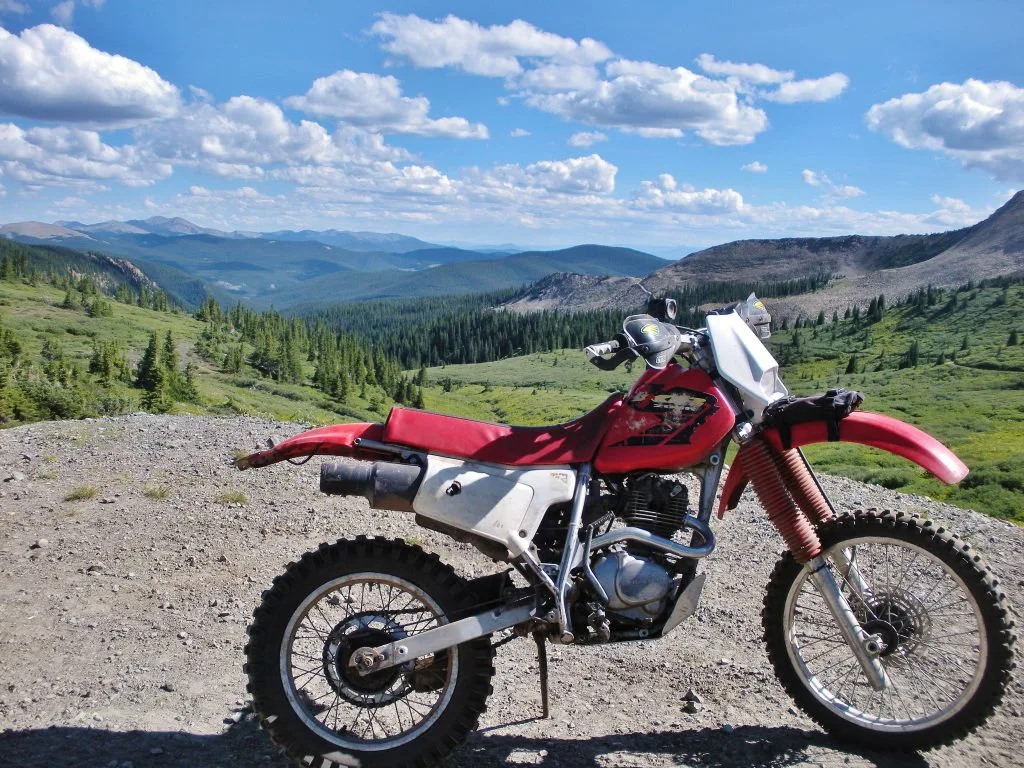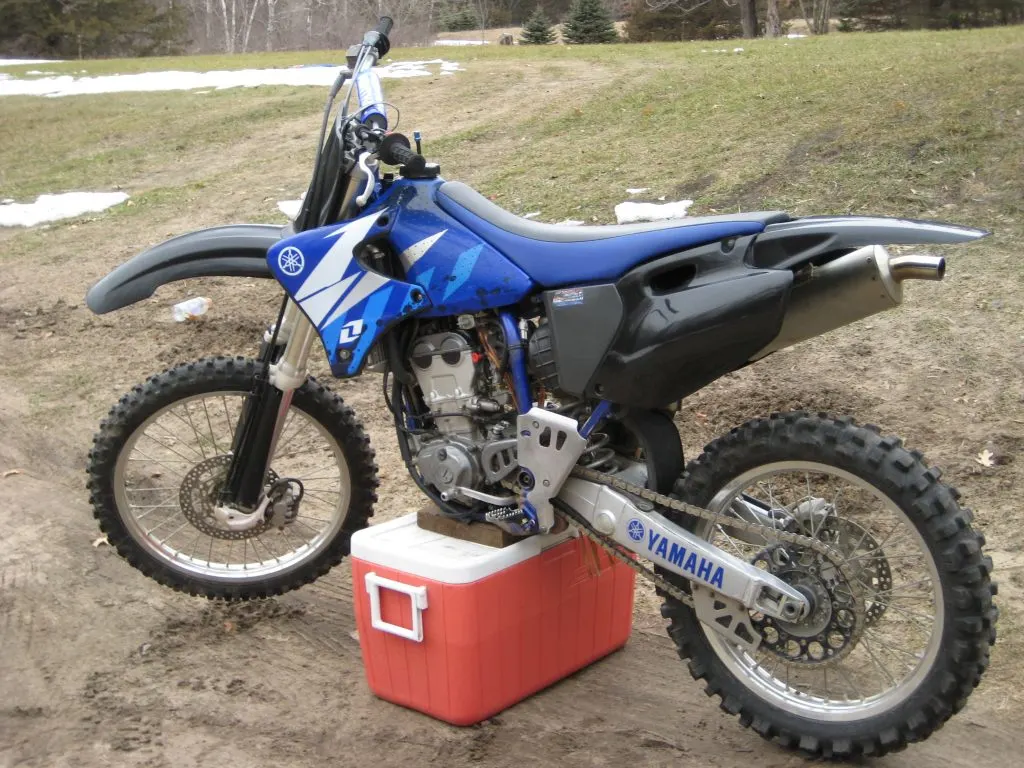What's the difference between an air cooled vs liquid cooled dirt bike, and how do you know which one is best for you?
I'll explain both types of dirt bikes and then how to easily determine which is right for you so that you can save time, money, and enjoy riding more without getting hurt.
Why do dirt bikes need to be cooled?
All gas engines create heat from the combustion of the fuel, and if they get too hot then they start to run poorly and can seize or cause excessive wear on the internal parts.

While the engine needs to get up to operating temperature in order to run properly, too much heat is its worst enemy. This is why engines need to be cooled in some way.
What is an air cooled dirt bike?
An air cooled dirt bike has an engine that is simply cooled by the air. For example, as you ride, the air and wind blowing past the engine cools down the engine block.
If you leave it idling, the heat has nowhere to go, and that's why it starts overheating and can cause the head pipe to start glowing red.
Is air cooled bad?
No, air cooled dirt bike engines are not bad. In fact, there are many good reasons to buy one.

An air-cooled dirt bike is:
- Reliable
- Simple
- Doesn't overheat as easily
- Generally easier to ride (for beginners)
What is a liquid cooled dirt bike?
A liquid-cooled dirt bike has a complete cooling system to keep the operating temp just right for best performance. This system includes a: water pump & impeller, radiators, water jackets in the engine, and hoses to connect the system so that it can circulate.
The water pump is powered by the engine, so the water is pumped through the engine and radiators by the pump pushing it through the system continually. The water simply absorbs the heat as it passes through the engine, and then it gets cooled as it passes through the radiators. The radiators cool the water (coolant) by air passing through the fins.
So, if there's no air passing through the radiators, a liquid-cooled engine is more likely to overheat. That's why it's easy for the coolant to boil over and spew coolant out the overflow hose if you're riding a tight and technical trail while slipping the clutch.

Do air-cooled dirt bikes overheat?
Yes, air-cooled dirt bikes can overheat if you aren't careful. They just usually take longer to get that hot because they're tuned for lower performance.
Letting the engine idle too long or slipping the clutch too much are the most common causes of your dirt bike overheating.
Which type of dirt bike is better?
It really depends on what your needs are. An air-cooled dirt bike is typically a trail bike that is best if you're a beginner.
A liquid-cooled dirt bike is built for better performance, so it's the better type of dirt bike for more experienced riders.
Best air cooled dirt bike
There are still quite a few air cooled dirt bikes to choose from, and most of them are really good if you just want a reliable dirt bike that's easy to ride.
The best air cooled dirt bikes are:
- Honda CRF50F
- Yamaha TTR125LE
- Kawasaki KLX140
- Yamaha TTR230
- Honda CRF250F
Any of these dirt bikes are great if you're looking for your first dirt bike. They're more affordable, simple and easy to maintain, reliable, and more forgiving to learn how to ride on.
Are there any air cooled 2 stroke dirt bikes?
There haven't been any air cooled 2 stroke dirt bikes made in quite a few years besides the Yamaha PW50.
These are the most likely air-cooled two-stroke models you'll be able to find:
- Yamaha PW50
- Suzuki JR50
- Yamaha PW80
- Yamaha RT100
- Kawasaki KDX200
Best dirt dirt bike for beginners
As I mentioned earlier, most air-cooled dirt bikes are the best type of bike for beginners. You just have to determine what size is best for you.
Best beginner dirt bikes for kids:
- Yamaha PW50
- Honda CRF50F
- Yamaha TTR50E
- Kawasaki KLX110
- Honda CRF125F
Best beginner dirt bikes for teens and adults:
- Yamaha TTR125LE
- Honda CRF125FB
- Kawasaki KLX140L/G
- Yamaha TTR230
- Kawasaki KLX230R
- Honda CRF250F
How to safely ride off-road
Starting on the right dirt bike is the first key to staying safe. The next step is by building your confidence with the proper techniques, and this is where many new riders mess up.
I want to show you how to easily make good riding habits so that you can enjoy riding more without the fear of getting hurt. Tap here to get started.

